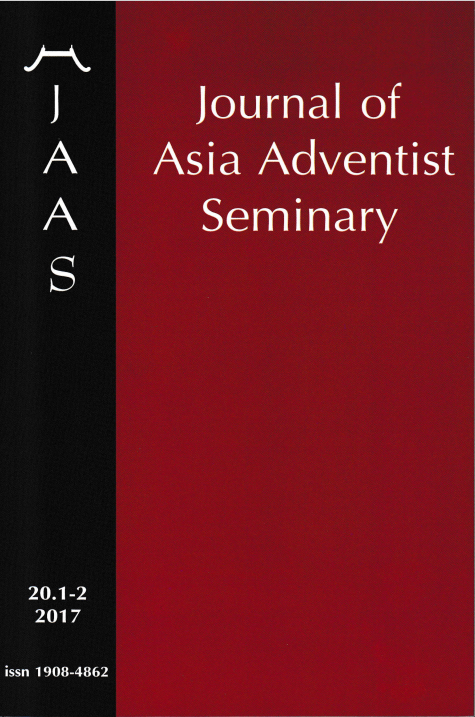Editorial
Abstract
Welcome to a new Issue of JAAS! Hermeneutics, historical studies, and the intersection of theology and social science make up the journal in your hands. Based on a logical assumption, that "good biblical hermeneutics changes life," Skip Bell, David Penno, and Stan Patterson conclude that hermeneutics should be judged by its results. Their proposed hermeneutic goes beyond an analysis of the biblical text, moving from solely focusing on the understanding of the past—from trying to understand the revelation of God—to an understanding of the present, to what God is working in the life of a Christian. The "God in life" hermeneutic implies the development of a hermeneutic conscience as part of the discipleship process. This hermeneutic principle calls for a reflective process in which experience becomes evaluative. Bell, Penno, and Patterson call for a return of biblical hermeneutic to its natural context of current reality of life. They call seminaries to prepare pastors in order to be able to equip disciples with this much needed competency of hermeneutic conscience. Read more about "God in life" hermeneutic in the first article of this journal.
Two more articles discuss interpretative issues, this time in the book of Daniel. Jounaid Sabri compares various translations of the text in Daniel 3:17-18 in order to clarify if the three friends of Daniel express doubt about the existence of God or about his desire or capacity to rescue them from fire. This reading raises issues in the context of the three characters being previously portrayed as fully trusting their God. Using textual criticism—syntactical structures in particular—Sabri looks at the conditionality and accuracy of the text.
Carlos Elias Mora emphasizes the need for grammatical and structural exegesis in order to decode the meaning of the last three chapters in the book of Daniel. He notes the repetition and enlargement, the historical-prophetic flow present in the text, specific words and expressions as textual markers, temporal expressions associated with defeat, particular verbs as markers of prophetic interpretation, as well as the structure of this section of the book of Daniel and the symbolic nature of geographical prophetic references in the NT after the cross as guidelines for interpreting more accurately the prophetic symbols in Daniel 10-12.
The next article is historical in nature. This issue of JAAS includes a new contribution of Gabriel Masfa's historical survey of Adventist mission in sub-Saharan Africa between 1940 and 1990, with emphasis on the painful transition from unavoidable and often unintended colonial mission to the current robust indigenous contribution. Masfa claims that Western missionaries were not prepared to deal with the pagan customs and traditions so prevalent in sub-Saharan Africa. However, he concludes that the indigenous "new evangelists" were able to integrate and redefine the evangelistic principles and skills taught by the Western pioneer missionaries to the point that Adventism in Africa became one of the major religious movements on that continent.
Finally, Chigemezi Wogu invites the readers of JASS to contemplate the development of theological ethnography as a tool for human accountability. He assesses the honesty of theological ethnography in accessing divine knowledge and human experience. He explores the intersection between theology and social science and weighs the strengths and weaknesses of allowing social science to interact with and evaluate theology. His desire is to generate a two-way conversation between these two fields in which he invites the reader to join.
Feel free to interact with the authors included in the current issue and also submit your research for publication in JAAS. We also welcome your book reviews of academic resources.

